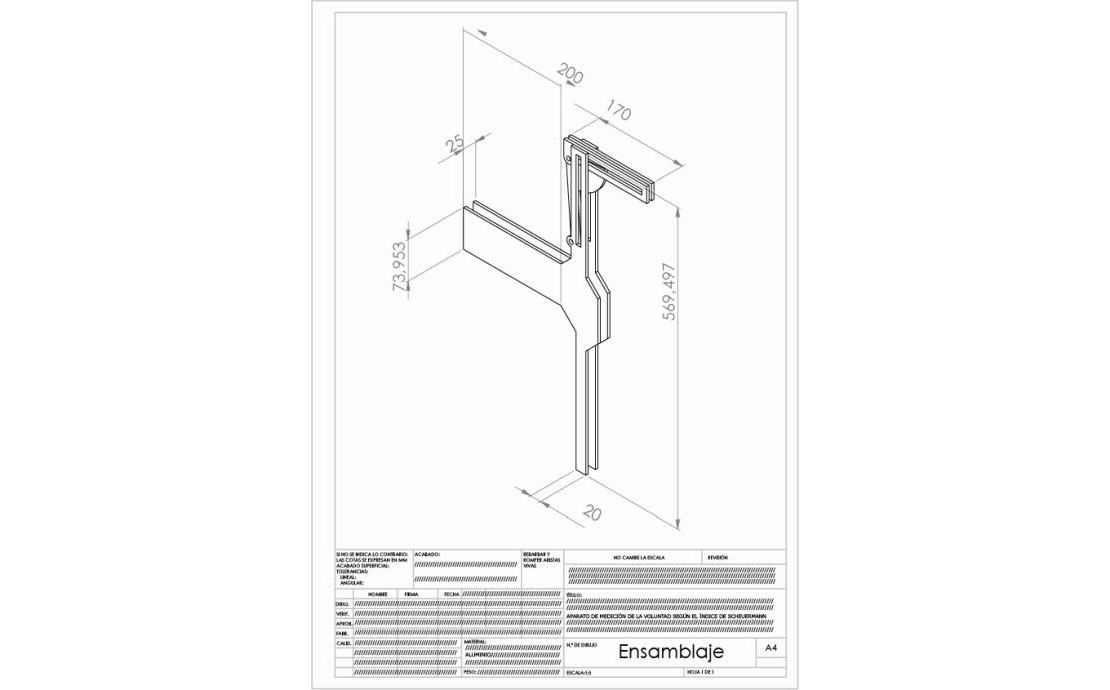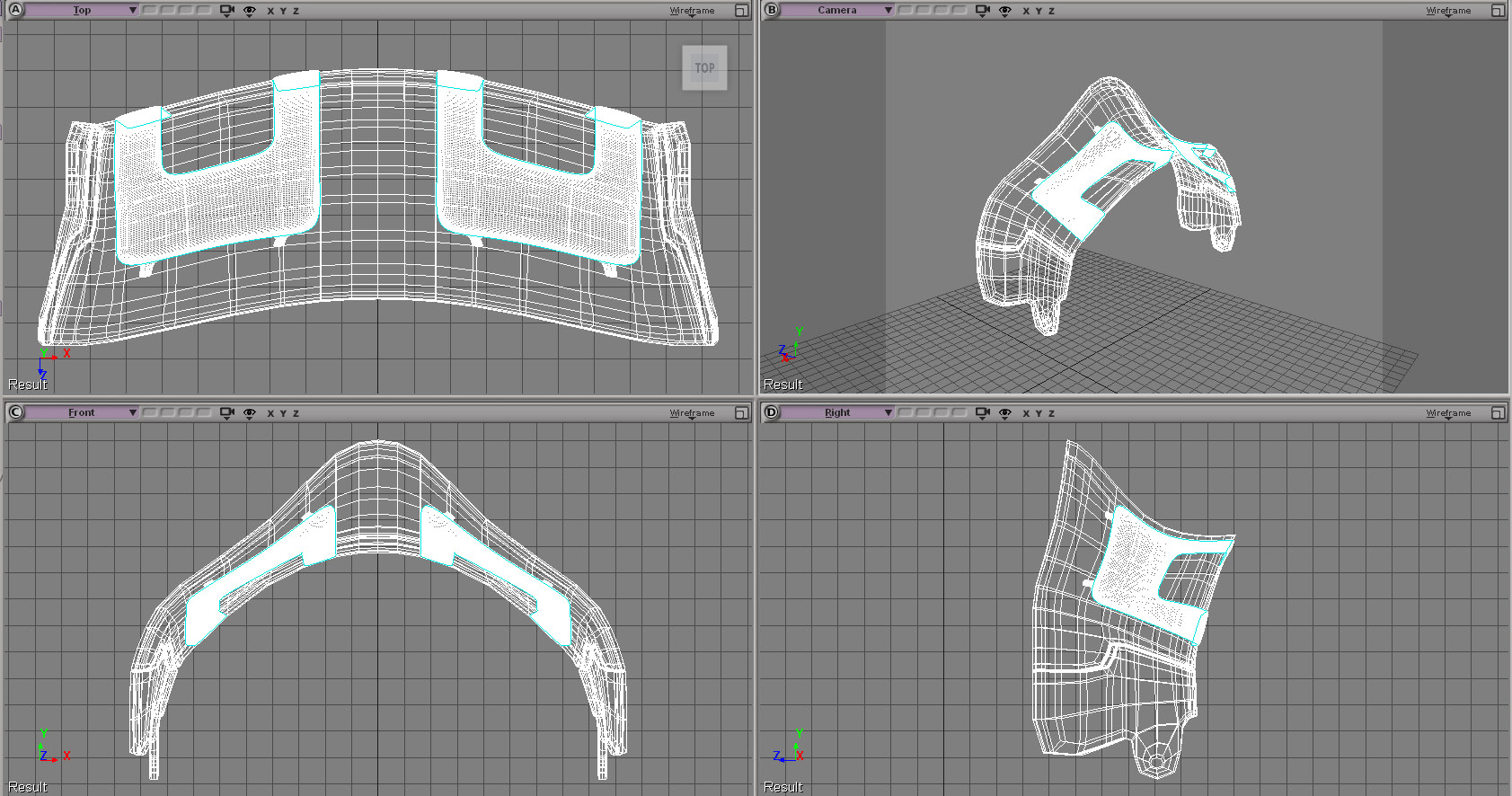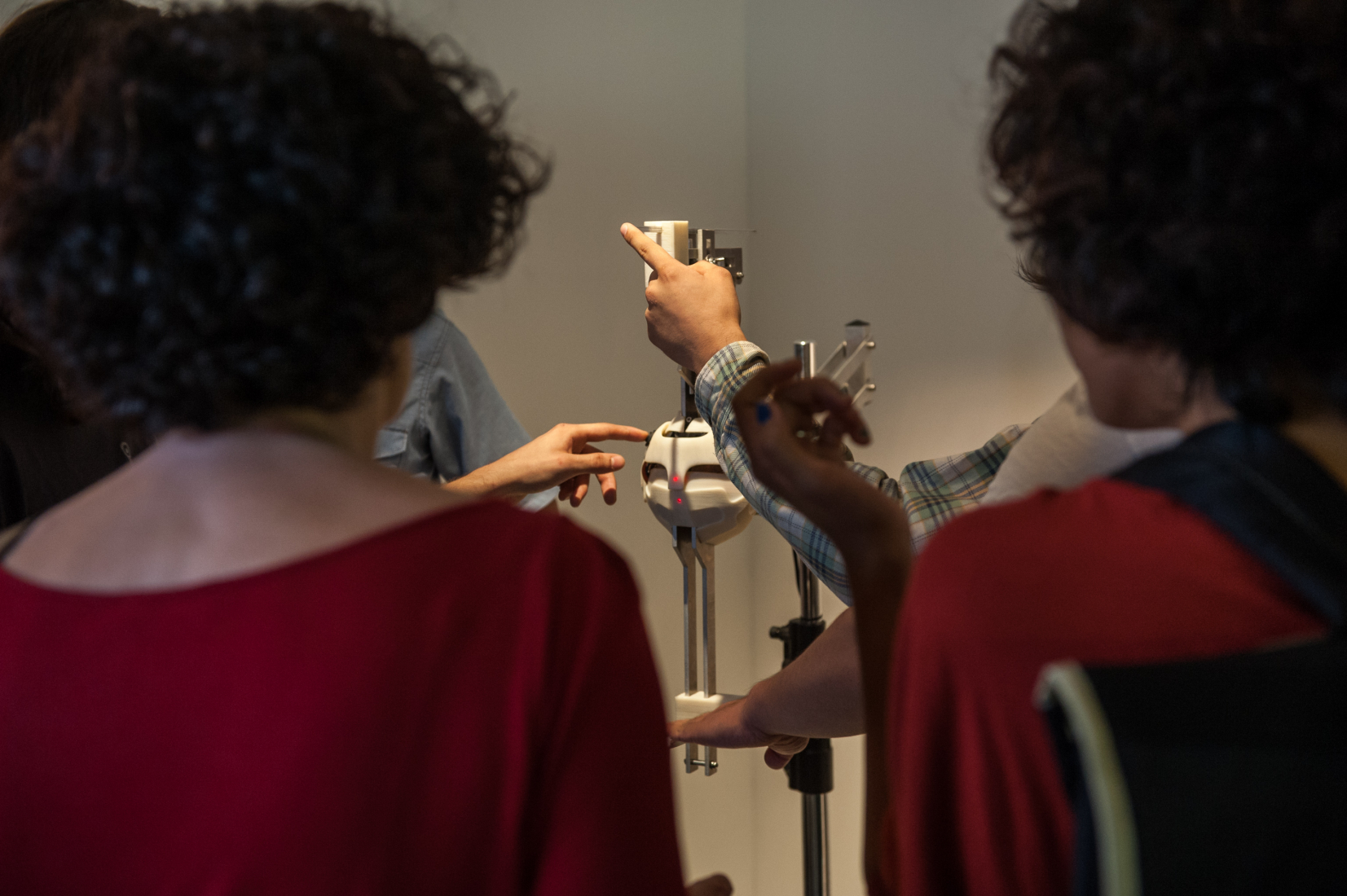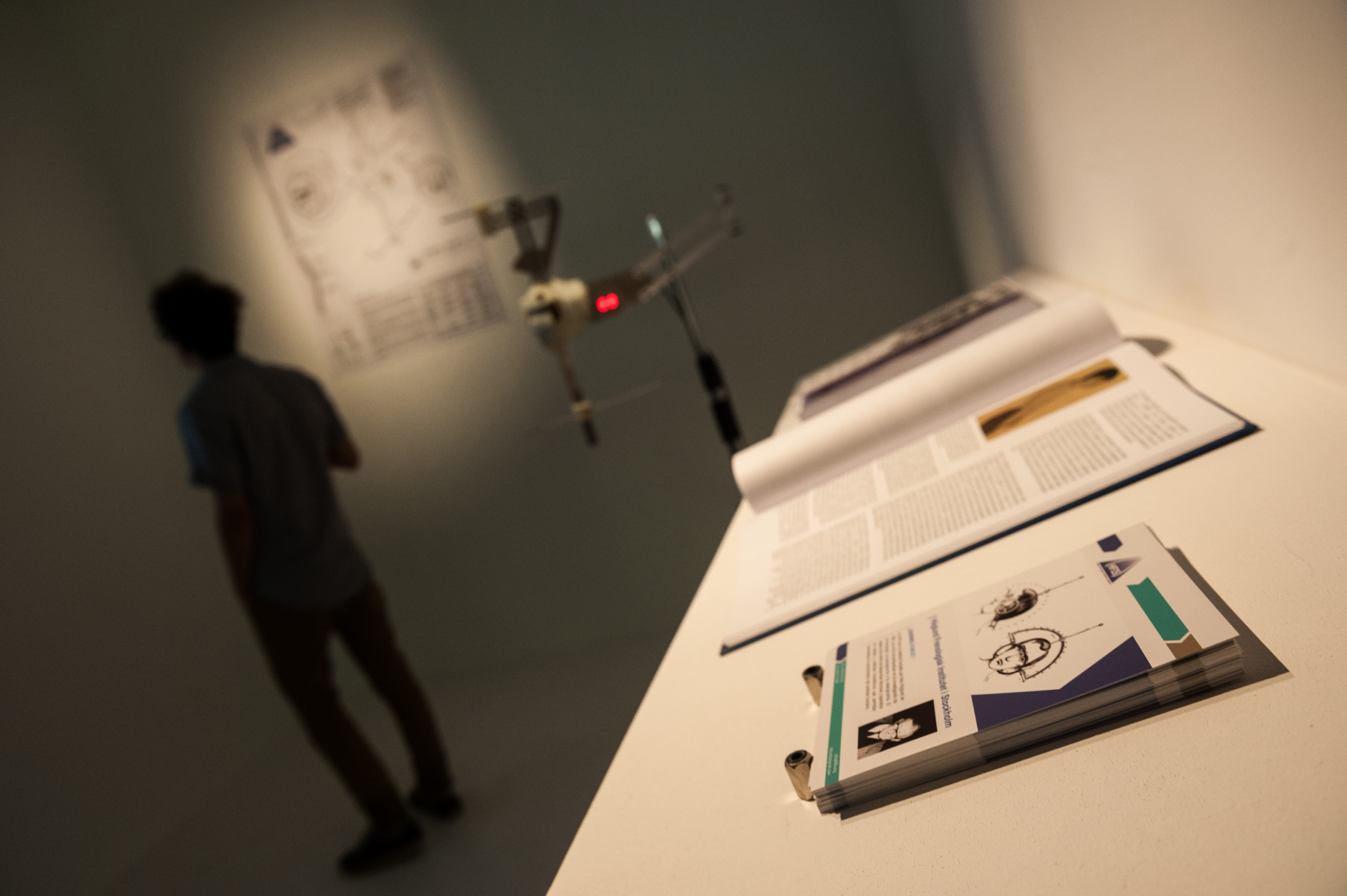Aparell per mesurar la voluntat segons l'índex de Scheuermann
Nicolás Rojas Hayes (Bogotá, 1982) holds a BA in Fine Arts from the University of Barcelona. His process brings different disciplines together and he frequently draws upon the installation format. Based on the combination of information, objective data and fictional narratives, he develops an aesthetic speculation that analyses the make-up of what is real in the collective imaginary and the relationship between the individual and technological mechanisms. His work has been presented in group exhibitions in Barcelona, Utrecht and New York. He took part in the project Off Massana, received a production grant from the Sala d'Art Jove in Barcelona and participated in the sound capsule project entitled Art/Fònic at Sant Andreu Contemporani in 2011. The artist has been chosen to pursue the MFA at Goldsmiths' College in London as from autumn 2012.
Aparell per mesurar la voluntat segons l'índex de Scheuermann (Measuring Device of Will According to the Scheuermann Index) proposes an informative installation in the form of a pseudo-scientific stand inside Espai Cub, drawing inspiration from today's reappraised phrenology (19th-century doctrine that established a connection between the shape of the skull and a person's personality), whose principles have been straightened out to an extent by branches of modern science such as neurology. The project proposes a dynamic showcase between artistic communication and scientific method. A measurement device, a video document of a conference on the research undertaken and a graphic display present the discovery of this new index to viewers, which renders the measurement of the degree of will of each individual possible by analysing the curvature of their spine.
In the early 19th century, Franz Joseph Gall laid the foundations for phrenology, a science that established a direct link between the morphology of the skull and human character based on the measurement of each individual's cranial bumps. Nowadays considered a pseudoscience, it is deemed to bear testimony to how the scientific method can be manipulated and wilfully distorted. However, until well into the 20th century, it was considered a scientific truth, acting as a forerunner to the aptitude test now used in the labour market.
In the 21st century, science has become the bearer of absolute truth, as religion was before. In light of its complexity and technical nature, those not involved in the field will have difficulty recognising the real validity of a theory. This example shows how a truth, though temporary, can be generated through institutions, strategies and means of validation accepted by the collective imaginary. Analysing these elements from the point of view of the permissiveness of art entails reflecting on the importance of doubt – and perhaps mistrust – before any presentation of truth, whatever its origin.
Aparell per mesurar la voluntat segons l'índex de Scheuermann creates a pretend science that proves, through its logic, how certain notions of truth are constructed. His theoretical basis is underpinned by the revisitation of phrenology, implemented in the last thirty years by the Höglund Institute of Phrenology in Stockholm (HFIS) to establish the parameters that correlate body and mind beyond the morphology of the skull, and by Scheuermann's disease, evident in adolescence and manifested in puberty as a weakening and deformation between the cervical vertebrae, which results in pronounced kyphosis. The cause of the disease is unknown and its treatment requires the use of an orthopaedic brace or even surgery. The project comprises a recent and detailed study of the disease, coming to recognise it as a condition. The cases considered pathological were extreme examples of something common in all humans, i.e. the physical manifestation of will.
In Espai Cub, a lecture outlining the conclusions of the HFIS, a real model of the measurement device and the findings of a study carried out using the scientific method MC-14 reveal how the original tool allows the degree of will of each individual to be classified on the basis of its system of grading, calculating, allocating and converting values.
Links
Colaborators






